#amazon route 53
Explore tagged Tumblr posts
Text
The Power of Amazon Route 53: A Comprehensive Overview Guide
#The Power of Amazon Route 53: A Comprehensive Overview Guide#The Power of Amazon Route 53#Amazon Route 53#AWS Services Company India#AWS Services Company#AWS Services#Amazon Web Services Company India#Amazon Web Services Company#Amazon Web Services#Lucid Outsourcing Solutions#Lucid Outsourcing#Lucid Solutions
0 notes
Text
0 notes
Text
Amazon Route 53 Resolver supports HTTPS DNS

As of right now, both incoming and outgoing Resolver endpoints can use the DNS over HTTPS (DoH) protocol with Amazon Route 53 Resolver. As the name implies, DoH allows data sent for Domain Name System (DNS) resolutions to be encrypted via HTTP or HTTP/2 over TLS.
By using TLS encryption to prevent eavesdropping and modification of DNS data during communication between a DoH client and the DoH-based DNS resolver, DoH improves security and privacy.
This aids in the implementation of a zero-trust architecture, in which all network traffic is encrypted and no actor, system, network, or service operating inside or outside of your security perimeter is trusted. Utilizing DoH also facilitates adherence to suggestions like those outlined in this US Office of Management and Budget (OMB) memo.
Support for DNS via HTTPS in Amazon Route 53 Resolver
In hybrid cloud setups, you can utilize Amazon Route 53 Resolver to resolve DNS queries. For instance, it permits DNS requests from any location inside your hybrid network to be accessed by AWS services. You can configure both inbound and outgoing Resolver endpoints to achieve this:
DNS queries from your on-premises network or another VPC can reach your VPC through inbound resolver endpoints.
DNS requests can be sent from your VPC to another VPC or your on-premises network using outbound resolver endpoints.
Following the configuration of the Resolver endpoints, you can create rules that indicate which domain names you wish to have forwarded (inbound) and outbound (from your VPC to an on-premises DNS resolver).
You may now choose the protocols to utilize when creating or updating an inbound or outbound Resolver endpoint:
DNS over port 53 (Do53), which transmits packets via TCP or UDP.
DNS over HTTPS (DoH), encrypts the data with TLS.
Both, depending on the DNS client’s preference.
There is a particular implementation (DoH-FIPS) for incoming endpoints in order to ensure FIPS compliance.
Let’s examine how this functions in real life
Using the Amazon Route 53 Resolver with DNS over HTTPS
You can select Inbound endpoints in the Route 53 console by going to the Resolver part of the navigation pane. You can select Create inbound endpoint there.
You can choose the security group, the VPC, the endpoint type (IPv4, IPv6, or dual-stack), and then enter the endpoint’s name. In the Protocols for this endpoint option, you can choose Do53, DoH, and DoH-FIPS to permit the use of both encrypted and unencrypted DNS resolutions.
Then set up the IP addresses for DNS queries after that. You can choose two Availability Zones and a subnet for each. You may use the option to have the IP addresses automatically chosen for this setup from the subnet’s available addresses.
Once the incoming endpoint has been created, You can set up my network’s DNS server to route requests for the amazonaws.com domain, which is used by AWS service endpoints, to the IP addresses of the inbound endpoints.
In a similar manner, you may establish an outgoing Resolver endpoint and choose Do53 as well as DoH as the protocols. Next, you design forwarding rules that specify which domains the outgoing Resolver endpoint in my network should forward queries to for DNS servers.
DNS resolutions are now secured when DNS clients in my hybrid environment utilize DNS over HTTPS in their requests. In the setting of inbound and outgoing endpoints, you have the option to impose encryption and choose only DoH.
Important information
All AWS Regions where Route 53 Resolver is available, including GovCloud Regions and Regions based in China, now support DNS over HTTPS for Amazon Route 53 Resolver.
The default DNS protocol for incoming and outgoing Resolver destinations is still port 53. Thus, unless you intend to switch from HTTPS to DNS, you don’t need to upgrade your current automated tools.
Using DNS over HTTPS with Resolver endpoints is free of charge. See Route 53 price for further details.
With Amazon Route 53 Resolver, start using DNS over HTTPS to improve security and privacy for your hybrid cloud settings.
Read more on Govindhtech.com
0 notes
Text
Amazon Route 53 Domain Registrar WHMCS Module
The Amazon Route 53 Domain Registrar WHMCS Module is a cutting-edge integration that bridges the gap between domain management and client billing in web hosting businesses. This module seamlessly combines the powerful domain registration capabilities of Amazon Route 53 with the comprehensive client management and billing features of WHMCS.
With the Amazon Route 53 Domain Registrar WHMCS Module, web hosting providers can elevate their domain management processes to new heights of efficiency and accuracy. This module empowers businesses to offer their clients a streamlined experience by allowing them to register, manage, and modify domains directly through the WHMCS interface.
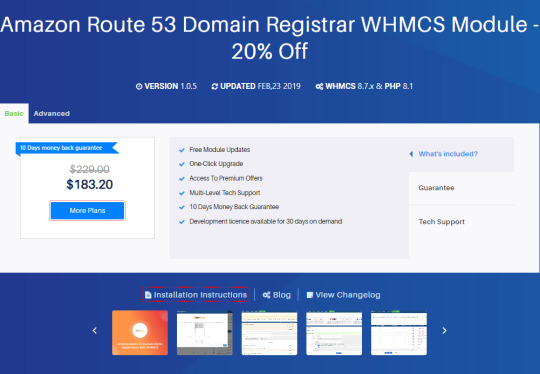
0 notes
Quote
正直なところ、GM◯系列を信用する方が悪い。素直にCloudflareかNamecheap使えばいいのに。Amazon Route 53でもいいけど。 / JPドメインだったらJPDirectが一番サポート手厚くてオススメ。やっぱり直販よ。
[B! GMO] 【更新】「お名前.com」で欲しいドメイン名を取ろうと購入画面に飛んだら、全然違う文字列のドメイン名を買わされそうになった「邪悪UI」「消費者庁案件では」
4 notes
·
View notes
Text
AWS Security 101: Protecting Your Cloud Investments
In the ever-evolving landscape of technology, few names resonate as strongly as Amazon.com. This global giant, known for its e-commerce prowess, has a lesser-known but equally influential arm: Amazon Web Services (AWS). AWS is a powerhouse in the world of cloud computing, offering a vast and sophisticated array of services and products. In this comprehensive guide, we'll embark on a journey to explore the facets and features of AWS that make it a driving force for individuals, companies, and organizations seeking to utilise cloud computing to its fullest capacity.

Amazon Web Services (AWS): A Technological Titan
At its core, AWS is a cloud computing platform that empowers users to create, deploy, and manage applications and infrastructure with unparalleled scalability, flexibility, and cost-effectiveness. It's not just a platform; it's a digital transformation enabler. Let's dive deeper into some of the key components and features that define AWS:
1. Compute Services: The Heart of Scalability
AWS boasts services like Amazon EC2 (Elastic Compute Cloud), a scalable virtual server solution, and AWS Lambda for serverless computing. These services provide users with the capability to efficiently run applications and workloads with precision and ease. Whether you need to host a simple website or power a complex data-processing application, AWS's compute services have you covered.
2. Storage Services: Your Data's Secure Haven
In the age of data, storage is paramount. AWS offers a diverse set of storage options. Amazon S3 (Simple Storage Service) caters to scalable object storage needs, while Amazon EBS (Elastic Block Store) is ideal for block storage requirements. For archival purposes, Amazon Glacier is the go-to solution. This comprehensive array of storage choices ensures that diverse storage needs are met, and your data is stored securely.
3. Database Services: Managing Complexity with Ease
AWS provides managed database services that simplify the complexity of database management. Amazon RDS (Relational Database Service) is perfect for relational databases, while Amazon DynamoDB offers a seamless solution for NoSQL databases. Amazon Redshift, on the other hand, caters to data warehousing needs. These services take the headache out of database administration, allowing you to focus on innovation.
4. Networking Services: Building Strong Connections
Network isolation and robust networking capabilities are made easy with Amazon VPC (Virtual Private Cloud). AWS Direct Connect facilitates dedicated network connections, and Amazon Route 53 takes care of DNS services, ensuring that your network needs are comprehensively addressed. In an era where connectivity is king, AWS's networking services rule the realm.
5. Security and Identity: Fortifying the Digital Fortress
In a world where data security is non-negotiable, AWS prioritizes security with services like AWS IAM (Identity and Access Management) for access control and AWS KMS (Key Management Service) for encryption key management. Your data remains fortified, and access is strictly controlled, giving you peace of mind in the digital age.
6. Analytics and Machine Learning: Unleashing the Power of Data
In the era of big data and machine learning, AWS is at the forefront. Services like Amazon EMR (Elastic MapReduce) handle big data processing, while Amazon SageMaker provides the tools for developing and training machine learning models. Your data becomes a strategic asset, and innovation knows no bounds.
7. Application Integration: Seamlessness in Action
AWS fosters seamless application integration with services like Amazon SQS (Simple Queue Service) for message queuing and Amazon SNS (Simple Notification Service) for event-driven communication. Your applications work together harmoniously, creating a cohesive digital ecosystem.
8. Developer Tools: Powering Innovation
AWS equips developers with a suite of powerful tools, including AWS CodeDeploy, AWS CodeCommit, and AWS CodeBuild. These tools simplify software development and deployment processes, allowing your teams to focus on innovation and productivity.
9. Management and Monitoring: Streamlined Resource Control
Effective resource management and monitoring are facilitated by AWS CloudWatch for monitoring and AWS CloudFormation for infrastructure as code (IaC) management. Managing your cloud resources becomes a streamlined and efficient process, reducing operational overhead.
10. Global Reach: Empowering Global Presence
With data centers, known as Availability Zones, scattered across multiple regions worldwide, AWS enables users to deploy applications close to end-users. This results in optimal performance and latency, crucial for global digital operations.
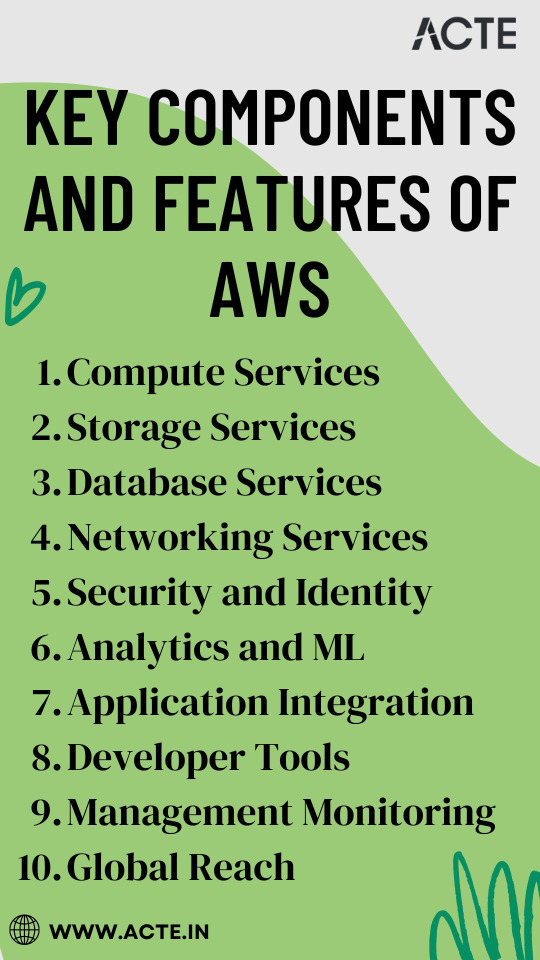
In conclusion, Amazon Web Services (AWS) is not just a cloud computing platform; it's a technological titan that empowers organizations and individuals to harness the full potential of cloud computing. Whether you're an aspiring IT professional looking to build a career in the cloud or a seasoned expert seeking to sharpen your skills, understanding AWS is paramount.
In today's technology-driven landscape, AWS expertise opens doors to endless opportunities. At ACTE Institute, we recognize the transformative power of AWS, and we offer comprehensive training programs to help individuals and organizations master the AWS platform. We are your trusted partner on the journey of continuous learning and professional growth. Embrace AWS, embark on a path of limitless possibilities in the world of technology, and let ACTE Institute be your guiding light. Your potential awaits, and together, we can reach new heights in the ever-evolving world of cloud computing. Welcome to the AWS Advantage, and let's explore the boundless horizons of technology together!
8 notes
·
View notes
Text
Navigating the Cloud Landscape: Unleashing Amazon Web Services (AWS) Potential
In the ever-evolving tech landscape, businesses are in a constant quest for innovation, scalability, and operational optimization. Enter Amazon Web Services (AWS), a robust cloud computing juggernaut offering a versatile suite of services tailored to diverse business requirements. This blog explores the myriad applications of AWS across various sectors, providing a transformative journey through the cloud.
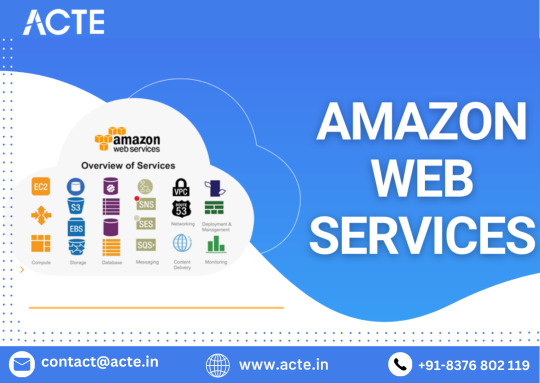
Harnessing Computational Agility with Amazon EC2
Central to the AWS ecosystem is Amazon EC2 (Elastic Compute Cloud), a pivotal player reshaping the cloud computing paradigm. Offering scalable virtual servers, EC2 empowers users to seamlessly run applications and manage computing resources. This adaptability enables businesses to dynamically adjust computational capacity, ensuring optimal performance and cost-effectiveness.
Redefining Storage Solutions
AWS addresses the critical need for scalable and secure storage through services such as Amazon S3 (Simple Storage Service) and Amazon EBS (Elastic Block Store). S3 acts as a dependable object storage solution for data backup, archiving, and content distribution. Meanwhile, EBS provides persistent block-level storage designed for EC2 instances, guaranteeing data integrity and accessibility.
Streamlined Database Management: Amazon RDS and DynamoDB
Database management undergoes a transformation with Amazon RDS, simplifying the setup, operation, and scaling of relational databases. Be it MySQL, PostgreSQL, or SQL Server, RDS provides a frictionless environment for managing diverse database workloads. For enthusiasts of NoSQL, Amazon DynamoDB steps in as a swift and flexible solution for document and key-value data storage.
Networking Mastery: Amazon VPC and Route 53
AWS empowers users to construct a virtual sanctuary for their resources through Amazon VPC (Virtual Private Cloud). This virtual network facilitates the launch of AWS resources within a user-defined space, enhancing security and control. Simultaneously, Amazon Route 53, a scalable DNS web service, ensures seamless routing of end-user requests to globally distributed endpoints.
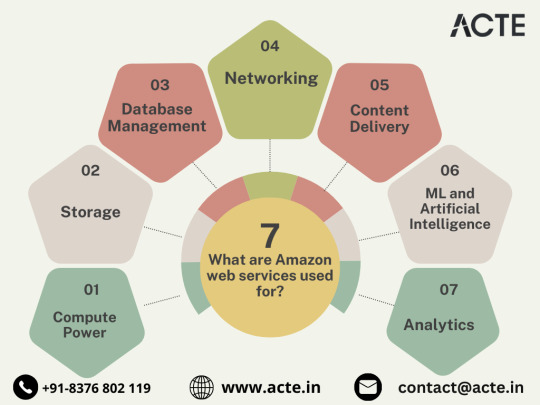
Global Content Delivery Excellence with Amazon CloudFront
Amazon CloudFront emerges as a dynamic content delivery network (CDN) service, securely delivering data, videos, applications, and APIs on a global scale. This ensures low latency and high transfer speeds, elevating user experiences across diverse geographical locations.
AI and ML Prowess Unleashed
AWS propels businesses into the future with advanced machine learning and artificial intelligence services. Amazon SageMaker, a fully managed service, enables developers to rapidly build, train, and deploy machine learning models. Additionally, Amazon Rekognition provides sophisticated image and video analysis, supporting applications in facial recognition, object detection, and content moderation.
Big Data Mastery: Amazon Redshift and Athena
For organizations grappling with massive datasets, AWS offers Amazon Redshift, a fully managed data warehouse service. It facilitates the execution of complex queries on large datasets, empowering informed decision-making. Simultaneously, Amazon Athena allows users to analyze data in Amazon S3 using standard SQL queries, unlocking invaluable insights.
In conclusion, Amazon Web Services (AWS) stands as an all-encompassing cloud computing platform, empowering businesses to innovate, scale, and optimize operations. From adaptable compute power and secure storage solutions to cutting-edge AI and ML capabilities, AWS serves as a robust foundation for organizations navigating the digital frontier. Embrace the limitless potential of cloud computing with AWS – where innovation knows no bounds.
3 notes
·
View notes
Text
aws online training in ameerpet

Amazon Web Services (AWS) is a widely used cloud computing platform that provides a variety of services and tools for building, deploying, and managing applications in the cloud. As the demand for skilled AWS professionals continues to grow, APEC IT Training offers comprehensive AWS training programs that are designed to teach participants the skills necessary to become proficient AWS developers and administrators.The AWS training program offered by APEC IT Training covers a wide range of topics, including AWS core services, security and compliance, migration, and automation. Participants are also introduced to more advanced topics such as DevOps, machine learning, and big data.
The course usually starts with the basics of AWS, including AWS Identity and Access Management (IAM), Elastic Compute Cloud (EC2), and Simple Storage Service (S3). Participants then move on to more advanced topics such as building scalable and fault-tolerant applications using AWS services such as Elastic Load Balancing, Auto Scaling, and Route 53.The training program also covers best practices for securing and complying with AWS services, migrating applications to AWS, and automating infrastructure using AWS CloudFormation and AWS CodePipeline.
visit: http://www.apectraining.com/aws/
2 notes
·
View notes
Text
A Comprehensive Guide to Amazon Web Services (AWS)
Amazon Web Services (AWS) has emerged as a leading cloud computing platform, revolutionizing how businesses and developers deploy and manage applications. Since its inception in 2006, AWS has expanded its offerings to include a vast array of services, catering to various industries and use cases. This guide will help you understand what AWS is, its key features, and how it can benefit your organization.

If you want to advance your career at the AWS Course in Pune, you need to take a systematic approach and join up for a course that best suits your interests and will greatly expand your learning path.
What is AWS?
AWS is a cloud services platform provided by Amazon that enables businesses to access computing power, storage, and various other functionalities via the internet. Rather than investing in physical hardware and infrastructure, organizations can utilize AWS to streamline operations and reduce costs.
Core Services Offered by AWS
AWS provides a wide range of services, but some of the most notable include:
Compute Services: Amazon EC2 (Elastic Compute Cloud) offers scalable virtual servers, while AWS Lambda enables serverless computing, allowing developers to run code without provisioning servers.
Storage Solutions: Amazon S3 (Simple Storage Service) provides scalable object storage for data, while Amazon EBS (Elastic Block Store) offers block storage for use with EC2 instances.
Database Services: AWS supports various database solutions, including Amazon RDS (Relational Database Service) for relational databases and Amazon DynamoDB for NoSQL databases.
Networking: AWS offers services like Amazon VPC (Virtual Private Cloud) for creating isolated networks and Amazon Route 53 for domain name system management.
Machine Learning: With services like Amazon SageMaker, developers can build, train, and deploy machine learning models efficiently.
Key Features of AWS
Scalability: AWS allows users to scale resources up or down based on demand. This capability is especially beneficial for businesses experiencing fluctuating workloads.
Cost-Effectiveness: With a pay-as-you-go pricing model, AWS enables organizations to only pay for the services they use, helping to optimize budgets.
Global Infrastructure: AWS operates data centers in multiple regions around the globe, providing low-latency access and high availability for users worldwide.
Robust Security: AWS implements a comprehensive security framework that includes data encryption, access controls, and compliance with industry standards, ensuring data protection.

To master the intricacies of AWS and unlock its full potential, individuals can benefit from enrolling in the AWS Online Training.
Use Cases for AWS
Web Hosting: Many companies host their websites and applications on AWS, leveraging its scalability and reliability.
Data Analytics: AWS provides tools for big data processing, with services like Amazon EMR (Elastic MapReduce) helping organizations analyze large datasets.
Backup and Recovery: AWS offers robust solutions for data backup and disaster recovery, ensuring that critical information is secure and accessible.
Internet of Things (IoT): AWS IoT Core connects and manages IoT devices, enabling businesses to harness data generated by these devices.
Conclusion
Amazon Web Services has transformed the IT landscape by offering flexible, scalable, and cost-effective cloud solutions. By leveraging AWS, organizations can enhance their operational efficiency, innovate faster, and reduce the burden of managing physical infrastructure. Whether you're a startup or an established enterprise, AWS provides the tools and resources to thrive in today's digital age.
0 notes
Text
AWS Certified Solutions Architect — Associate: A Gateway to Cloud Mastery
In the world of cloud computing, Amazon Web Services (AWS) has established itself as the leader, offering a vast array of cloud services that enable businesses to innovate and scale globally. With more companies moving their infrastructure to the cloud, there’s a growing demand for skilled professionals who can design and deploy scalable, secure, and cost-efficient systems using AWS. One of the best ways to demonstrate your expertise in this area is by obtaining the AWS Certified Solutions Architect — Associate certification.
This certification is ideal for IT professionals looking to build a solid foundation in designing cloud architectures and solutions using AWS services. In this blog, we’ll explore what the AWS Solutions Architect — Associate certification entails, why it’s valuable, what skills it validates, and how it can help propel your career in cloud computing.
What is the AWS Certified Solutions Architect — Associate Certification?
The AWS Certified Solutions Architect — Associate certification is a credential that validates your ability to design and implement distributed systems on AWS. It is designed for individuals who have experience in architecting and deploying applications in the AWS cloud and want to showcase their ability to create secure, high-performance, and cost-efficient cloud solutions.
This certification covers a wide range of AWS services and requires a thorough understanding of architectural best practices, making it one of the most sought-after certifications for cloud professionals. It is typically the first step for individuals aiming to achieve more advanced certifications, such as the AWS Certified Solutions Architect — Professional.
Why is AWS Solutions Architect — Associate Important?
1. High Demand for AWS Skills
As more businesses migrate to AWS, the demand for professionals with AWS expertise has skyrocketed. According to a 2022 report by Global Knowledge, AWS certifications rank among the highest-paying IT certifications globally. The Solutions Architect — Associate certification can help you stand out to potential employers by validating your skills in designing and implementing AWS cloud architectures.
2. Recognition and Credibility
Earning this certification demonstrates that you possess a deep understanding of how to design scalable, secure, and highly available systems on AWS. It is recognized globally by companies and hiring managers as a mark of cloud proficiency, enhancing your credibility and employability in cloud-focused roles such as cloud architect, solutions architect, or systems engineer.
3. Versatile Skill Set
The AWS Solutions Architect — Associate certification provides a broad foundation in AWS services, architecture patterns, and best practices. It covers everything from storage, databases, networking, and security to cost optimization and disaster recovery. These versatile skills are applicable across various industries, making you well-equipped to handle a wide range of cloud-related tasks.

What Skills Will You Learn?
The AWS Certified Solutions Architect — Associate exam is designed to assess your ability to design and deploy robust, scalable, and fault-tolerant systems in AWS. Here’s a breakdown of the key skills and knowledge areas that the certification covers:
1. AWS Core Services
The certification requires a solid understanding of AWS’s core services, including:
Compute: EC2 instances, Lambda (server less computing), and Elastic Load Balancing (ELB).
Storage: S3 (Simple Storage Service), EBS (Elastic Block Store), and Glacier for backup and archival.
Databases: Relational Database Service (RDS), DynamoDB (NoSQL database), and Aurora.
Networking: Virtual Private Cloud (VPC), Route 53 (DNS), and Cloud Front (CDN).
Being familiar with these services is essential for designing effective cloud architectures.
2. Architecting Secure and Resilient Systems
The Solutions Architect — Associate exam focuses heavily on security best practices and resilience. You’ll need to demonstrate how to:
Implement security measures using AWS Identity and Access Management (IAM).
Secure your data using encryption and backup strategies.
Design systems with high availability and disaster recovery by leveraging multi-region and multi-AZ (Availability Zone) setups.
3. Cost Management and Optimization
AWS offers flexible pricing models, and managing costs is a crucial aspect of cloud architecture. The certification tests your ability to:
Select the most cost-efficient compute, storage, and database services for specific workloads.
Implement scaling strategies using Auto Scaling to optimize performance and costs.
Use tools like AWS Cost Explorer and Trusted Advisor to monitor and reduce expenses.
4. Designing for Performance and Scalability
A key part of the certification is learning how to design systems that can scale to handle varying levels of traffic and workloads. You’ll gain skills in:
Using AWS Auto Scaling and Elastic Load Balancing to adjust capacity based on demand.
Designing decoupled architectures using services like Amazon SQS (Simple Queue Service) and SNS (Simple Notification Service).
Optimizing performance for both read- and write-heavy workloads using services like Amazon DynamoDB and RDS.
5. Monitoring and Operational Excellence
Managing cloud environments effectively requires robust monitoring and automation. The exam covers topics such as:
Monitoring systems using Cloud Watch and setting up alerts for proactive management.
Automating tasks like system updates, backups, and scaling using AWS tools such as Cloud Formation and Elastic Beanstalk.
AWS Solutions Architect — Associate Exam Overview
To earn the AWS Certified Solutions Architect — Associate certification, you need to pass the SAA-C03 exam. Here’s an overview of the exam:
Exam Format: Multiple-choice and multiple-response questions.
Number of Questions: 65 questions.
Duration: 130 minutes (2 hours and 10 minutes).
Passing Score: A score between 720 and 1000 (the exact passing score varies by exam version).
Cost: $150 USD.
The exam focuses on four main domains:
Design Secure Architectures (30%)
Design Resilient Architectures (26%)
Design High-Performing Architectures (24%)
Design Cost-Optimized Architectures (20%)
These domains reflect the key competencies required to design and deploy systems in AWS effectively.
How to Prepare for the AWS Solutions Architect — Associate Exam
Preparing for the AWS Solutions Architect — Associate exam requires a blend of theoretical knowledge and practical experience. Here are some steps to help you succeed:
AWS Training Courses: AWS offers several training courses, including the official “Architecting on AWS” course, which provides comprehensive coverage of exam topics.
Hands-On Experience: AWS’s free tier allows you to explore and experiment with key services like EC2, S3, and VPC. Building real-world projects will reinforce your understanding of cloud architecture.
Study Guides and Books: There are numerous books and online resources dedicated to preparing for the Solutions Architect exam. Popular books like “AWS Certified Solutions Architect Official Study Guide” provide detailed coverage of exam objectives.
Practice Exams: Taking practice tests can help familiarize you with the exam format and highlight areas that need more attention. AWS offers sample questions, and third-party platforms like Whiz labs and Udemy provide full-length practice exams.
Conclusion
Earning the AWS Certified Solutions Architect — Associate certification is a significant achievement that can open up new career opportunities in the fast-growing cloud computing field. With its focus on core AWS services, security best practices, cost optimization, and scalable architectures, this certification validates your ability to design and implement cloud solutions that meet modern business needs.
Whether you’re an IT professional looking to specialize in cloud computing or someone aiming to advance your career, the AWS Solutions Architect — Associate certification can provide the knowledge and credibility needed to succeed in today’s cloud-driven world.
0 notes
Text
A Step-by-Step Guide to Creating a Highly Available AWS RDS Database Cluster
Introduction Creating a highly available AWS RDS database cluster is a crucial step in ensuring the reliability and scalability of your database infrastructure. In this tutorial, we will guide you through the process of setting up a highly available AWS RDS database cluster using AWS RDS, Amazon VPC, and Amazon Route 53. By the end of this tutorial, you will have a comprehensive understanding of…
0 notes
Text
#Amazon Route 53#Route 53#AWS#History#Timeline#Chronology#Announcements#Announce#General Availability#GA#Overview#Functions#Features#Updates#Introduction
0 notes
Text
10+ AWS Projects for Students to Showcase Cloud Skills
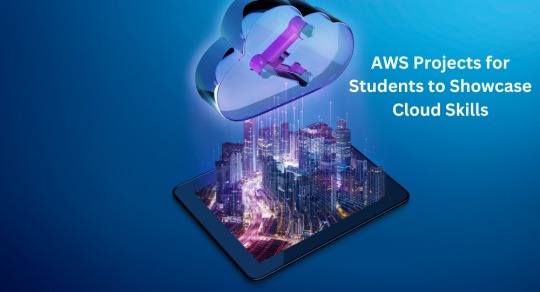
Cloud computing has revolutionized how businesses and individuals manage data, offering scalable and reliable solutions. Amazon Web Services (AWS) is at the forefront of this transformation, providing a vast array of tools and services for deploying, managing, and optimizing applications. For students eager to showcase their cloud skills, working on AWS projects can be a great way to gain hands-on experience and enhance their portfolios.https://internshipgate.com
Here’s a list of 10+ AWS projects that students can explore to demonstrate their cloud computing expertise:
1. Build a Static Website on AWS S3
Host a fully functional static website using AWS S3. Combine it with Amazon CloudFront for faster content delivery and Route 53 for domain management.
Skills Highlighted: S3 bucket setup, DNS configuration, content delivery network (CDN) integration.
2. Create a Personal Portfolio Using AWS Amplify
AWS Amplify simplifies app development and hosting. Build a personal portfolio showcasing your AWS projects and deploy it using Amplify.
Skills Highlighted: Frontend development, CI/CD, deployment pipeline.
3. Deploy a Serverless Application Using AWS Lambda
Develop a serverless application that performs specific tasks (e.g., image processing or text analysis) using AWS Lambda. Integrate it with API Gateway and DynamoDB for data storage.
Skills Highlighted: Serverless architecture, API integration, database management.
4. Set Up a Virtual Private Cloud (VPC)
Design a secure and scalable AWS VPC. Configure subnets, route tables, and internet gateways. Optionally, simulate a hybrid cloud by integrating with an on-premises network using AWS VPN.
Skills Highlighted: Networking, security, infrastructure setup.
5. Launch a Machine Learning Model on AWS SageMaker
Train and deploy a machine learning model using Amazon SageMaker. Use datasets from Kaggle or AWS Open Data Registry to predict trends or analyze data.
Skills Highlighted: Machine learning, data preprocessing, model deployment.
6. Implement a Real-Time Chat Application
Build a chat application using AWS AppSync for real-time data syncing. Combine it with Cognito for user authentication and DynamoDB for storing messages.
Skills Highlighted: Real-time data synchronization, user management, app development.
7. Design an IoT System with AWS IoT Core
Create an IoT application where devices send data to AWS IoT Core. Visualize this data using AWS QuickSight or store it in Amazon RDS for analytics.
Skills Highlighted: IoT integration, data visualization, cloud database management.
8. Build a Scalable E-Commerce Platform
Develop an e-commerce prototype using Amazon EC2 for hosting, RDS for database management, and S3 for storing product images. Enhance the platform with CloudFront for speed optimization.
Skills Highlighted: Full-stack development, scalability, cloud storage.
9. Implement Disaster Recovery with AWS Backup
Simulate a disaster recovery system by configuring AWS Backup to automatically create backups of your database and storage. Test restoring from backups to ensure reliability.
Skills Highlighted: Backup management, reliability engineering, disaster recovery.
10. Analyze Big Data with AWS Glue and Athena
Extract and transform data using AWS Glue and query it using Athena. Pair this project with Amazon S3 for storage and QuickSight for visualization.
Skills Highlighted: Data analysis, ETL (Extract, Transform, Load), data querying.
11. Create a Photo Album Using AWS Rekognition
Develop a photo album application that uses Amazon Rekognition to analyze and tag uploaded photos. Add search functionality based on identified objects or people.
Skills Highlighted: AI/ML integration, image processing, app functionality.
12. Host a CI/CD Pipeline with AWS CodePipeline
Set up a CI/CD pipeline for a simple app using AWS CodePipeline. Integrate it with CodeCommit for version control and CodeBuild for automated builds.
Skills Highlighted: DevOps, CI/CD, version control integration.
Tips to Maximize Your Learning
Start with small projects and gradually move to complex ones.
Document your process on GitHub or a personal blog to share your learning.
Explore AWS Free Tier to keep costs manageable during project development.
Join AWS communities or forums to seek help and collaborate with peers.
Conclusion
Completing AWS projects not only helps you understand cloud computing concepts but also gives you practical experience with industry-relevant tools. Whether you’re building applications, managing infrastructure, or exploring AI, these projects will make your portfolio stand out to potential employers.https://internshipgate.com
#career#internship#virtualinternship#internshipgate#internship in india#education#cloud computing#aws cloud#aws course#projects
0 notes
Text
"How Do AWS Solution Architects Balance Flexibility and Complexity in Cloud Designs?"

When designing applications that span multiple AWS regions, there are several architectural considerations to ensure the deployment is highly available, performant, secure, and cost-efficient. Multi-region deployments are crucial for global applications that require low latency, disaster recovery, regulatory compliance, or redundancy. As an AWS Solution Architect, understanding these considerations can significantly impact the design and success of multi-region AWS architectures.
Here are the key architectural considerations for multi-region AWS deployments:
1. High Availability and Fault Tolerance
Overview:
A primary reason for multi-region deployments is to ensure high availability and fault tolerance. By distributing workloads across multiple regions, you can safeguard your application against regional failures such as natural disasters, power outages, or network disruptions.
Key Strategies:
Cross-Region Replication: Use services like Amazon S3, Amazon RDS, and DynamoDB with cross-region replication to ensure that data is available in multiple regions.
Amazon Route 53: Implement Route 53, AWS’s DNS service, to route traffic to healthy endpoints based on the health of applications in different regions.
Multi-Region Load Balancing: Leverage AWS Global Accelerator or use Application Load Balancers to distribute traffic across multiple regions based on geographic location or latency.
Considerations:
Latency: While multi-region architectures improve availability, there may be increased latency due to data replication and cross-region data transfer.
Data Synchronization: Managing real-time data synchronization and consistency across regions can be complex, especially for stateful applications.
2. Latency Optimization
Overview:
For applications that require low-latency access to end-users, it’s essential to distribute resources across regions that are geographically closer to the users.
Key Strategies:
Amazon CloudFront: Use CloudFront, AWS’s Content Delivery Network (CDN), to cache static content in edge locations worldwide, reducing latency for global users.
Regional Replication: Place resources such as EC2 instances and databases in regions close to users to minimize the round-trip time for data retrieval.
Route Traffic Based on Latency: Using Route 53 latency-based routing, AWS can direct user traffic to the region with the lowest response time, improving performance.
Considerations:
Geo-Location Specific Requirements: Ensure your regions comply with data residency laws and regional regulations, which may affect where you store and process data.
Network Design: A multi-region setup can introduce additional complexity in managing networking across different regions, especially in terms of routing traffic and securing communications.
3. Disaster Recovery and Backup
Overview:
A multi-region architecture helps achieve disaster recovery by ensuring that workloads can be quickly shifted to another region in case of failure. Disaster recovery (DR) strategies can vary from simple data backup to fully automated, multi-region failover.
Key Strategies:
Backup Across Regions: Implement cross-region backups using services like Amazon S3, RDS, and EBS Snapshots to ensure that data can be restored in the event of a regional failure.
Active-Active vs. Active-Passive Deployment: Choose between active-active (both regions serving traffic) or active-passive (one region is a standby) failover strategies based on business requirements for recovery time and data consistency.
Automated Failover: Use AWS CloudFormation or AWS Elastic Beanstalk for automated infrastructure deployment and failover when regions go down.
Considerations:
Cost: Multi-region deployments can increase costs due to data transfer between regions and maintaining resources in standby mode.
Recovery Time Objectives (RTO): The speed of recovery is critical. The architect must determine whether the application can tolerate some downtime or requires near-instant failover.
4. Data Sovereignty and Compliance
Overview:
Many organizations must comply with laws and regulations regarding where data can be stored and processed, such as the General Data Protection Regulation (GDPR) in the European Union or data residency laws in other countries.
Key Strategies:
Region-Specific Storage: Place sensitive data in specific regions that comply with local data residency laws, using services like S3, DynamoDB, or RDS.
Encryption: Ensure that data is encrypted at rest and in transit to meet security and compliance standards. Utilize AWS Key Management Service (KMS) to manage encryption keys across regions.
Audit and Monitoring: Leverage AWS CloudTrail and AWS Config to monitor resources across regions for compliance and security requirements.
Considerations:
Regional Regulations: Carefully assess regulatory requirements for each region and implement controls that prevent cross-border data transfer when prohibited by local laws.
Data Residency: Choose specific AWS regions that are compliant with the local laws where the business operates, especially when dealing with customer data.
5. Cost Optimization
Overview:
Multi-region architectures can increase costs due to the need to replicate data, transfer traffic, and maintain redundant infrastructure. However, there are strategies to optimize costs while maintaining performance and availability.
Key Strategies:
Right-Sizing Resources: Continuously monitor and right-size EC2 instances, databases, and storage across regions based on actual usage to avoid over-provisioning.
Spot Instances and Reserved Instances: Take advantage of EC2 Spot Instances for non-critical workloads in multiple regions or use Reserved Instances to lock in lower pricing for long-term, predictable workloads.
Data Transfer Costs: Be mindful of the costs associated with cross-region data transfer. Design the architecture to minimize data movement, such as by using CloudFront for caching static content and reducing the need for data replication across regions.
Considerations:
Data Transfer Fees: Data transferred across AWS regions is subject to charges, which can accumulate quickly if not carefully managed.
Balancing Cost and Performance: Achieving cost efficiency in a multi-region deployment requires balancing the need for high availability with the cost of maintaining redundant resources in different regions.
6. Network Design and Connectivity
Overview:
A robust network design is essential for connecting resources across multiple regions while maintaining security and performance.
Key Strategies:
AWS Transit Gateway: Use AWS Transit Gateway to simplify and centralize the network architecture by connecting multiple VPCs across regions. This helps manage inter-region traffic efficiently.
VPC Peering and Direct Connect: Set up VPC Peering or AWS Direct Connect to establish private, low-latency connectivity between regions.
PrivateLink and VPN: Use AWS PrivateLink and VPN connections for secure and private communication between services across regions.
Considerations:
Latency Impact: Inter-region connectivity can introduce latency, so careful planning is required to ensure that the architecture remains performant, especially for applications that rely on low-latency access.
Security Risks: Managing multiple connections across regions increases the attack surface. It’s essential to implement strong security controls, such as using AWS Shield for DDoS protection and AWS IAM for fine-grained access management.
7. Automation and Infrastructure as Code (IaC)
Overview:
Managing infrastructure across multiple regions can quickly become complex, so automation is key to ensuring consistency and reducing human error.
Key Strategies:
AWS CloudFormation: Use AWS CloudFormation or Terraform to automate the deployment of resources across multiple regions. This ensures that infrastructure is consistent and repeatable.
CI/CD Pipelines: Implement CI/CD pipelines (using services like AWS CodePipeline) to automatically deploy code and updates to applications across regions.
Considerations:
Complexity of Automation: Automation can become complicated in multi-region environments, particularly when dependencies span multiple regions or require region-specific configurations.
Versioning and Rollbacks: Careful version control and rollback strategies are necessary to ensure that changes are deployed safely and reliably across regions.
Conclusion
Designing a multi-region AWS architecture requires careful planning and consideration of factors like availability, latency, disaster recovery, security, and cost. An effective multi-region deployment enhances the resilience and global reach of applications, providing a seamless experience for users around the world. However, it also introduces challenges that require expertise in network design, data replication, regulatory compliance, and cost management. By carefully addressing these architectural considerations, businesses can build a robust, scalable, and secure multi-region infrastructure on AWS.
#awstraining#cloudservices#softwaredeveloper#training#iot#data#azurecloud#artificialintelligence#softwareengineer#cloudsecurity#cloudtechnology#business#jenkins#softwaretesting#onlinetraining#ansible#microsoftazure#digitaltransformation#ai#reactjs#awscertification#google#cloudstorage#git#devopstools#coder#innovation#cloudsolutions#informationtechnology#startup
0 notes
Text
How to Build Your First Application on AWS
Amazon Web Services (AWS) provides a robust platform for building, deploying, and scaling applications. Whether you're a developer or a beginner in cloud computing, AWS offers tools and services to simplify the process. This guide will walk you through building your first application on AWS step by step.
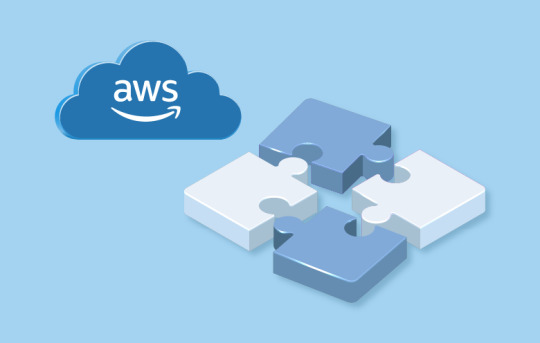
Why Build Applications on AWS?
Scalability: Handle traffic spikes effortlessly.
Cost-Efficiency: Pay only for what you use.
Reliability: AWS ensures uptime with its global infrastructure.
Ease of Use: User-friendly services like Elastic Beanstalk and Lightsail simplify development.
Step 1: Set Up Your AWS Account
Before you begin, create an AWS account if you don’t already have one.
Go to AWS Signup Page.
Enter your email, set up your password, and provide payment details (the Free Tier allows free usage for many services).
Enable MFA (Multi-Factor Authentication) for added security.
Step 2: Choose Your Application Type
Define the type of application you want to build:
Web Application: A dynamic website or backend for mobile apps.
API: Create RESTful APIs using AWS Lambda or API Gateway.
Static Website: Host HTML, CSS, and JavaScript files.
Step 3: Select the Right AWS Services
AWS offers numerous services, but for a basic application, these are the essentials:
1. Compute Service (EC2 or Elastic Beanstalk):
Amazon EC2: Virtual machines for full control over deployment.
Elastic Beanstalk: Managed service to deploy web apps quickly.
2. Storage Service (S3):
Use Amazon S3 to store application assets, such as images and data files.
3. Database Service (RDS or DynamoDB):
RDS: For relational databases like MySQL or PostgreSQL.
DynamoDB: For NoSQL databases.
4. Networking (Route 53):
Manage DNS and custom domains for your app.
Step 4: Develop Locally
Build the initial version of your application on your local machine:
Tech Stack Suggestions:
Frontend: HTML, CSS, JavaScript, or frameworks like React and Angular.
Backend: Node.js, Python (Django/Flask), or Java (Spring Boot).
Database: SQLite for development, migrate to RDS or DynamoDB for production.
Step 5: Deploy Your Application
Once your app is ready, deploy it to AWS. Here's how:
Option 1: Using Elastic Beanstalk (Easiest Method):
Log in to the AWS Management Console.
Navigate to Elastic Beanstalk.
Create a new application, upload your app’s code (ZIP file), and launch it.
AWS automatically provisions EC2 instances, sets up a load balancer, and configures scaling.
Option 2: Using Amazon EC2 (Manual Method):
Launch an EC2 instance from the AWS Console.
SSH into the instance and install necessary dependencies (e.g., Node.js or Python).
Deploy your application files to the server.
Configure a web server like Nginx or Apache to serve your application.
Option 3: Using AWS Lightsail (For Beginners):
Navigate to AWS Lightsail.
Create a new instance with pre-configured blueprints like Node.js or WordPress.
Upload and run your application files.
Step 6: Connect Your Domain
Point your domain name to your application using Route 53:
Purchase or transfer a domain to AWS Route 53.
Set up an A record to point to your application’s public IP or load balancer.
Step 7: Test Your Application
Before going live, thoroughly test your application:
Functionality Testing: Ensure all features work as intended.
Load Testing: Simulate high traffic using tools like AWS CloudWatch or Locust.
Security Testing: Check for vulnerabilities using AWS Inspector.
Step 8: Monitor and Optimize
AWS provides tools to monitor performance and optimize your application:
AWS CloudWatch: Monitor app performance and resource usage.
AWS Trusted Advisor: Optimize costs, improve performance, and ensure security.
Auto Scaling: Scale resources automatically based on traffic.
Step 9: Scale and Grow
As your application gains users, AWS makes it easy to scale:
Horizontal Scaling: Add more servers via load balancers.
Vertical Scaling: Upgrade server specifications.
Global Distribution: Use AWS CloudFront to serve content globally with low latency.
Start your AWS journey today! Watch this step-by-step YouTube Live Session on AWS Application Development for detailed guidance and live demonstrations.
0 notes
Text
Navigating AWS: A Comprehensive Guide for Beginners
In the ever-evolving landscape of cloud computing, Amazon Web Services (AWS) has emerged as a powerhouse, providing a wide array of services to businesses and individuals globally. Whether you're a seasoned IT professional or just starting your journey into the cloud, understanding the key aspects of AWS is crucial. With AWS Training in Hyderabad, professionals can gain the skills and knowledge needed to harness the capabilities of AWS for diverse applications and industries. This blog will serve as your comprehensive guide, covering the essential concepts and knowledge needed to navigate AWS effectively.

1. The Foundation: Cloud Computing Basics
Before delving into AWS specifics, it's essential to grasp the fundamentals of cloud computing. Cloud computing is a paradigm that offers on-demand access to a variety of computing resources, including servers, storage, databases, networking, analytics, and more. AWS, as a leading cloud service provider, allows users to leverage these resources seamlessly.
2. Setting Up Your AWS Account
The first step on your AWS journey is to create an AWS account. Navigate to the AWS website, provide the necessary information, and set up your payment method. This account will serve as your gateway to the vast array of AWS services.
3. Navigating the AWS Management Console
Once your account is set up, familiarize yourself with the AWS Management Console. This web-based interface is where you'll configure, manage, and monitor your AWS resources. It's the control center for your cloud environment.
4. AWS Global Infrastructure: Regions and Availability Zones
AWS operates globally, and its infrastructure is distributed across regions and availability zones. Understand the concept of regions (geographic locations) and availability zones (isolated data centers within a region). This distribution ensures redundancy and high availability.
5. Identity and Access Management (IAM)
Security is paramount in the cloud. AWS Identity and Access Management (IAM) enable you to manage user access securely. Learn how to control who can access your AWS resources and what actions they can perform.
6. Key AWS Services Overview
Explore fundamental AWS services:
Amazon EC2 (Elastic Compute Cloud): Virtual servers in the cloud.
Amazon S3 (Simple Storage Service): Scalable object storage.
Amazon RDS (Relational Database Service): Managed relational databases.
7. Compute Services in AWS
Understand the various compute services:
EC2 Instances: Virtual servers for computing capacity.
AWS Lambda: Serverless computing for executing code without managing servers.
Elastic Beanstalk: Platform as a Service (PaaS) for deploying and managing applications.
8. Storage Options in AWS
Explore storage services:
Amazon S3: Object storage for scalable and durable data.
EBS (Elastic Block Store): Block storage for EC2 instances.
Amazon Glacier: Low-cost storage for data archiving.
To master the intricacies of AWS and unlock its full potential, individuals can benefit from enrolling in the Top AWS Training Institute.
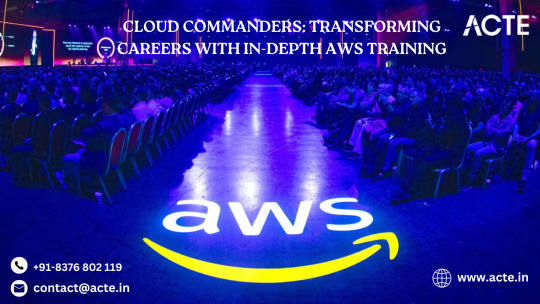
9. Database Services in AWS
Learn about managed database services:
Amazon RDS: Managed relational databases.
DynamoDB: NoSQL database for fast and predictable performance.
Amazon Redshift: Data warehousing for analytics.
10. Networking Concepts in AWS
Grasp networking concepts:
Virtual Private Cloud (VPC): Isolated cloud networks.
Route 53: Domain registration and DNS web service.
CloudFront: Content delivery network for faster and secure content delivery.
11. Security Best Practices in AWS
Implement security best practices:
Encryption: Ensure data security in transit and at rest.
IAM Policies: Control access to AWS resources.
Security Groups and Network ACLs: Manage traffic to and from instances.
12. Monitoring and Logging with AWS CloudWatch and CloudTrail
Set up monitoring and logging:
CloudWatch: Monitor AWS resources and applications.
CloudTrail: Log AWS API calls for audit and compliance.
13. Cost Management and Optimization
Understand AWS pricing models and manage costs effectively:
AWS Cost Explorer: Analyze and control spending.
14. Documentation and Continuous Learning
Refer to the extensive AWS documentation, tutorials, and online courses. Stay updated on new features and best practices through forums and communities.
15. Hands-On Practice
The best way to solidify your understanding is through hands-on practice. Create test environments, deploy sample applications, and experiment with different AWS services.
In conclusion, AWS is a dynamic and powerful ecosystem that continues to shape the future of cloud computing. By mastering the foundational concepts and key services outlined in this guide, you'll be well-equipped to navigate AWS confidently and leverage its capabilities for your projects and initiatives. As you embark on your AWS journey, remember that continuous learning and practical application are key to becoming proficient in this ever-evolving cloud environment.
2 notes
·
View notes